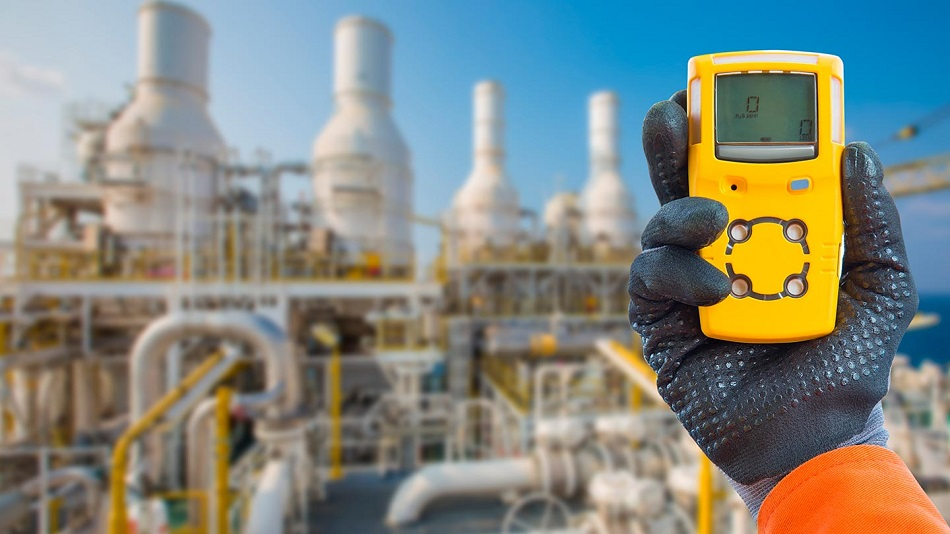Also called a “periodic function test”, a bump test is a simple test carried out on portable gas monitors to verify that they are functioning correctly. While contemporary gas detection technology is highly sensitive and accurate, the humble bump test continues to be a fundamental part of ensuring safety in environments that may include hazardous gases.

Bump testing is frequently overlooked despite its importance. This article provides a brief guide to bump testing, including what the process entails, why it is important, and how often it should be performed.
Gas Hazards in Industry
In a number of industries, gas hazards are an element of daily life, such as in petrochemical storage facilities, wastewater treatment plants, and oil refineries. Personnel who work in these environments depend on personal gas monitoring equipment to identify specific gases and trigger an alert if concentrations begin to exceed safe thresholds.
Serious risks such as asphyxiation, poisoning, and explosion can be posed by hazardous gases. This means that ensuring the accuracy of gas monitoring equipment is fundamental to protect the health of employees in industries where hazardous gases are prevalent.
The Importance of Testing
Calibration and bump testing are the two steps required to ensure that gas monitoring equipment is working to standard.1
Calibration is a quantitative test where the instrument’s response is compared to a known concentration of a target gas to ensure that the response from the detector to a target gas correctly reflects the actual concentration. An adjustment to the instrument is normally involved. Calibrations are performed less often, in line with the guidelines from the manufacturer, or if there is a bump test failure.
Bump testing is a qualitative test. Bump testing is where a detector is exposed to a target gas at an exposure time and concentration that is high enough to trigger all alarm indicators. The user then simply makes sure that the alarms have been activated. This verifies that all of the alarms are working and that the gas can reach the sensors.
A bump test is the only way of detecting a number of possible issues. Carrying out this test is essential as it excludes issues that would not be identified through a calibration check. For example, the device may be properly calibrated, but the ‘unsafe’ concentration may have been defined incorrectly. In other cases, an alarm speaker may be blocked or damaged.
How Often Should You Bump Test Your Portable Gas Monitors?
Bump testing is frequently overlooked. Minimal training is required for bump testing and in most cases, it can be performed in approximately 30 seconds. While organizations are not legally required to bump test equipment, the BSIF, ISEA, and Air Products all suggest performing a bump test daily before use.2,3
View Air Products’ bump test tutorial video to see the simplicity of the process.
Gas for Bump Testing
A dependable supply of the target gas(es) is critical for bump testing. Bump testing can be made easier and more efficient by having these to hand when required. The selection of specialty gases from Air Products provides stable and traceable mixtures in a broad range of portable canisters created for convenient calibration and testing.
Non-refillable canisters from Air Products are the ideal compromise between gas portability and capacity, and its highly accurate gas mixes are provided with certificates of analysis as standard.
References and Further Reading
- What’s the Difference Between a Bump Test and Calibration—and Why Should You Care? - Spotlight on Safety | MSA Corporate Blog. Available at: https://blog.msasafety.com/whats-the-difference-between-a-bump-test-and-calibration-and-why-should-you-care/. (Accessed: 19th June 2020)
- BSIF - Bump Testing. Available at: http://www.bsif.co.uk/wp-content/uploads/2019/01/Bump-Test-Every-Time-0318.pdf. (Accessed: 19th June 2020)
- ISEA Statement on Validation of Operation For Direct Reading Portable Gas Monitors. https://safetyequipment.org/ (Accessed: 19th June 2020)

This information has been sourced, reviewed and adapted from materials provided by Air Products PLC.
For more information on this source, please visit Air Products PLC.